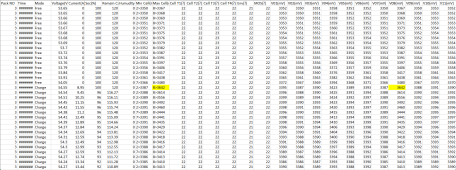I have 6 server rack-style batteries. 2 of them have a weak cell and the 1 cell trips the BMS charge MOSFET every day before it reaches full, so there is still charge potential left on the table for the overall pack.
Once the charge MOSFETs shut down in those 2 packs, they don't turn back on, while all other batteries fill and then work normally. Those 2 won't discharge once this has happened. I usually have to reset the BMSs for those 2 to get the charge MOSFET to function again (which triggers the high current protections for those packs as they try to catch up (discharge down) to the other batteries at a lower of charge later in the day. Is this normal?
What else can I do?
Once the charge MOSFETs shut down in those 2 packs, they don't turn back on, while all other batteries fill and then work normally. Those 2 won't discharge once this has happened. I usually have to reset the BMSs for those 2 to get the charge MOSFET to function again (which triggers the high current protections for those packs as they try to catch up (discharge down) to the other batteries at a lower of charge later in the day. Is this normal?
What else can I do?
Last edited:



